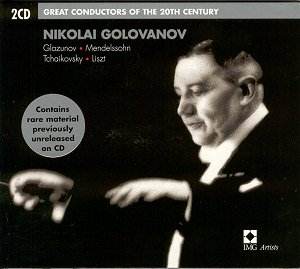 Composer: Gustav Mahler
Composer: Gustav Mahler
Works: Symphony No. 9 in D Minor
Performers: Vienna Philharmonic Orchestra; Bruno Walter, conductor
Recording: Live, 16th January 1938, Musikverein, Vienna
Label: NAXOS HISTORICAL 8.110852
The Ninth Symphony of Gustav Mahler stands as a profound meditation on loss and farewell, a fitting capstone to his oeuvre that encapsulates both personal and historical tragedy. Composed during the twilight of the composer’s life, this work reflects Mahler’s confrontation with mortality, made all the more poignant by the historical context of its performance—a mere eight weeks before Austria’s annexation by Nazi Germany. The Naxos release of this live recording from January 1938, conducted by Bruno Walter and featuring the venerable Vienna Philharmonic Orchestra, offers listeners a visceral connection to this tumultuous period, capturing not only the music but the palpable tensions of its time.
Walter’s interpretation of the First Movement is exemplary, exhibiting a tempo that is deliberate yet lyrical, allowing Mahler’s expansive melodic lines to unfold naturally. The strings, characterized by their lush warmth, convey a sense of nostalgia that permeates the movement, creating an atmosphere imbued with a bittersweet yearning. Notably, the moment 27 bars from the end, where the orchestra falls silent save for the solo flute, encapsulates the haunting stillness of the hall, drawing the audience into a shared moment of suspended time. This is a stark reminder that the performance exists as both a musical event and a historical document, the audience’s awareness of impending doom echoing in the silence that follows.
The second movement, a Ländler, is rendered with an earthy authenticity that challenges the tendency of some modern interpretations to sanitize Mahler’s sharp edges. Walter allows the orchestra to dig into the rhythms, emphasizing the rustic, almost primal qualities of the music. Here, the bows bite into the strings, evoking village fiddlers at a lively dance, a stark contrast to the more refined approaches that often smooth out Mahler’s textures. This unvarnished approach serves to expose the raw emotional underpinning of Mahler’s work, reflecting the composer’s ambivalence towards the rural folk traditions he both cherished and critiqued.
As the Third Movement’s Rondo Burleske unfolds, the strains of the orchestra begin to reveal the effects of the performance’s emotional and physical demands. The VPO, while at times precarious, conveys a sense of urgency that enhances the movement’s chaotic nature. The tension between the players, perhaps a reflection of the world outside the concert hall, contributes to an atmosphere of impending collapse—an interpretive choice that underscores Mahler’s own premonitions of destruction. The occasional fluffs and imprecision here, while distracting at points, ultimately serve to deepen the listener’s engagement with the music’s intrinsic instability.
The final Adagio, while undeniably beautiful and rich, presents a curious contrast to what may be expected from this movement. Walter’s brisk pacing seems to rush the coda, a decision that might bewilder those familiar with slower, more reflective interpretations from Bernstein or Haitink. The strings, however, retain their glorious sound, which, despite the swift tempo, resonates with a profound sense of closure. One wonders whether Walter, sensing a waning concentration among the audience, opted for a more energetic conclusion, an interpretation that may challenge traditional expectations but nonetheless imbues the performance with a distinctive character.
The sound quality of this recording, as restored by Mark Obert-Thorn, bears the hallmarks of its era, with a certain degree of surface noise that persists. Admittedly, this might dissuade those accustomed to the pristine clarity of modern studio recordings. However, this patina of age lends an authenticity that enhances the historical value of the performance. The Naxos release captures a balance between the atmospheric richness of the hall and the clarity of individual instrumental lines, providing a compelling listening experience that invites repeated exploration.
The comparative landscape of recordings offers a rich tapestry of interpretations. While the EMI Références version may provide a more refined listening experience with its greater reverberation and sweeter string sound, the Naxos edition remains a vital document of a critical moment in music history. Those already possessing the EMI may find the Naxos a worthwhile addition, offering a different sonic perspective that complements the overall narrative of this historic performance.
This 1938 recording of Mahler’s Ninth Symphony holds an irreplaceable place in the pantheon of recorded music, embodying not only the artistry of the Vienna Philharmonic under Bruno Walter but also the poignant echoes of its historical moment. For those seeking to understand the complexities of Mahler’s final symphonic statement, this Naxos release stands as an essential listening experience, a visceral encounter with both the music and the shadows that shaped its conception.



